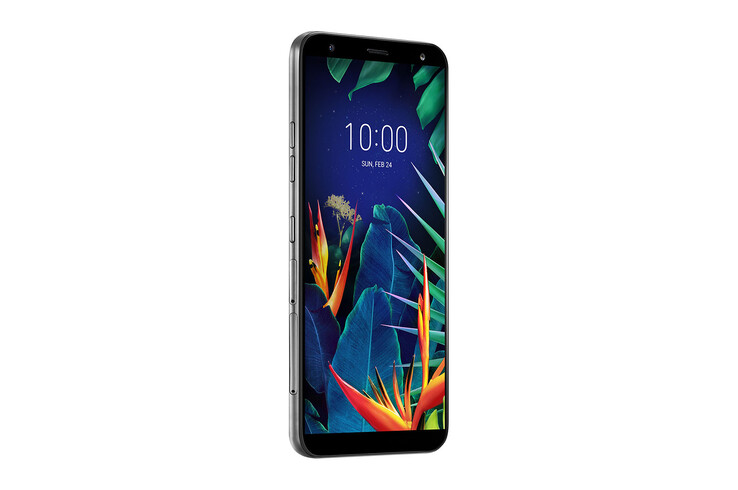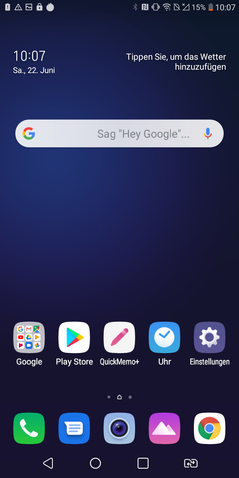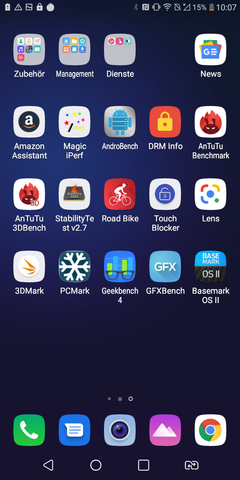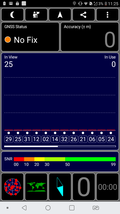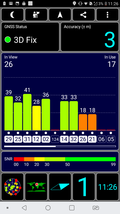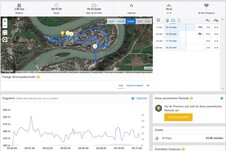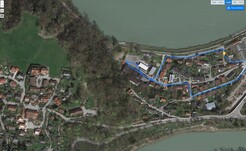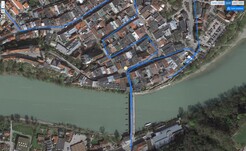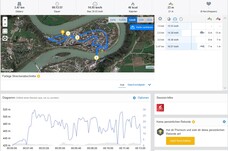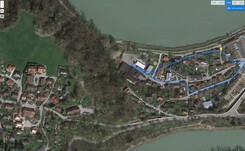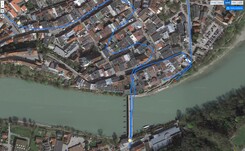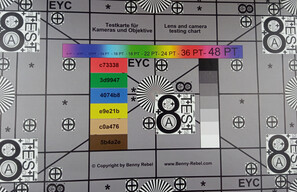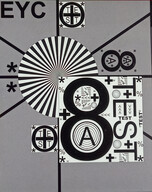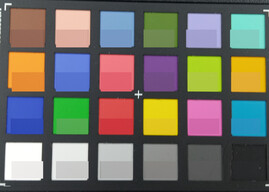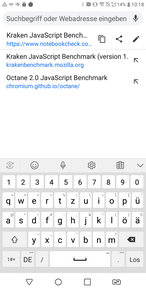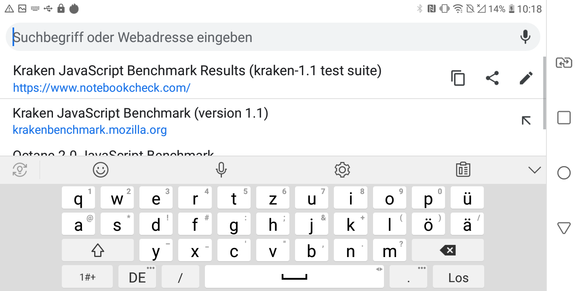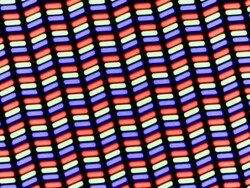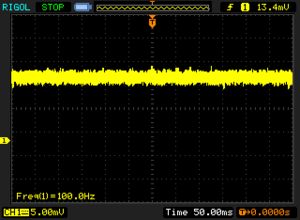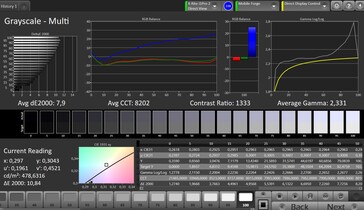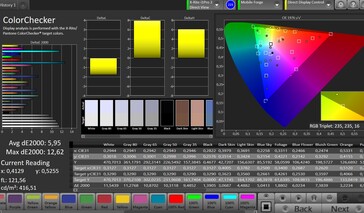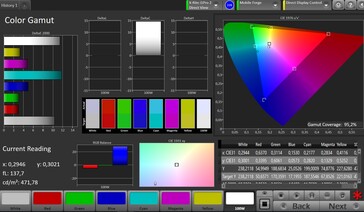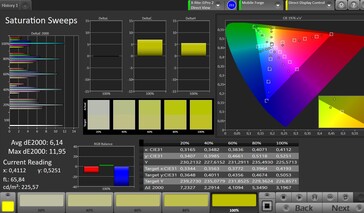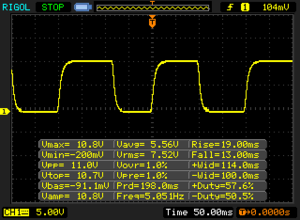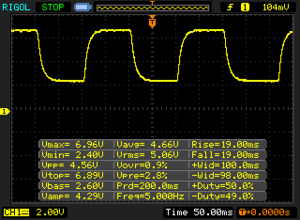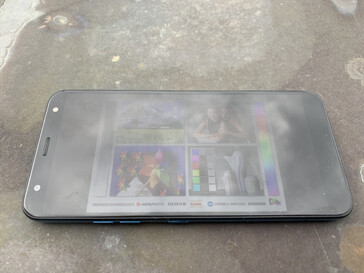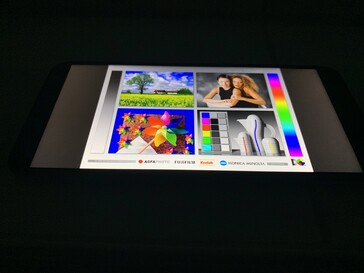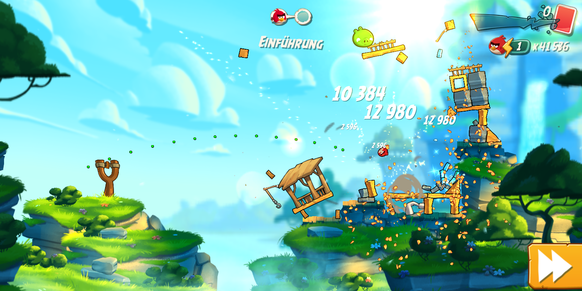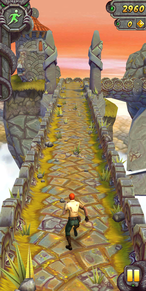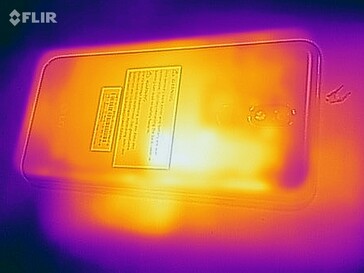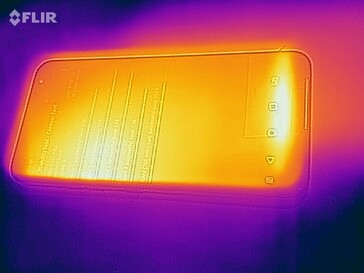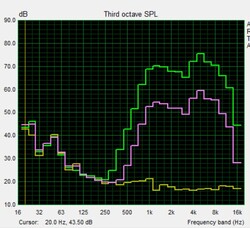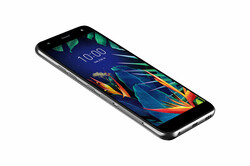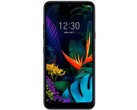LG K40 Smartphone Review: A cheery and affordable handset
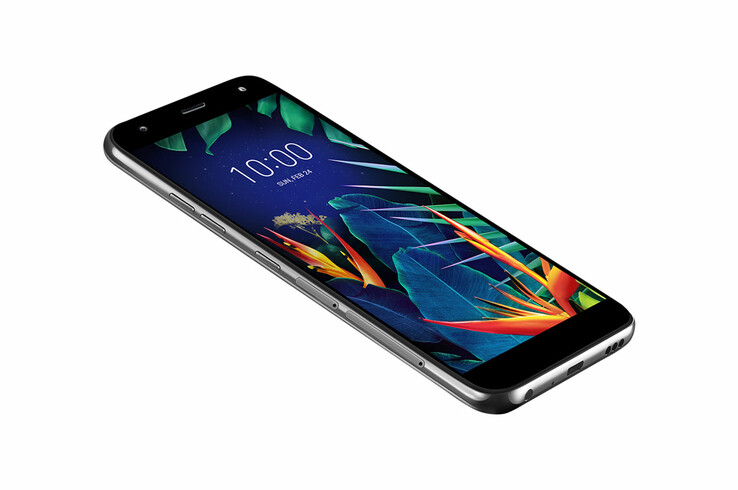
LG refreshes its affordable K series annually. Last year, we reviewed the LG K9 and LG K11, which were both budget smartphones. This year, the South Korean manufacturer has positioned its K series against the Samsung A series, with the K40 being the focus of this review.
The smartphone retails for €169 (~$193), but it can be found for closer to €150 (~$171) online. We will compare our review unit against the Huawei Y6 (2019), Motorola Moto G7 Play and Xiaomi Redmi 7.
Case
LG has designed the K40 with a metal case, as you may have noticed by the dull shine of our blue review unit. The company also sells the device in black and grey should blue not be your thing. LG has given the frame a glossy finish and a subtly accented colour. The display has comparatively thick top and bottom bezels though, which detracts from what is an otherwise contemporary looking design.
LG certifies the K40 as MIL-STD-810 compliant, which means that it must have successfully passed fourteen environmental and climatic tests. However, no independent organisation or agency certifies MIL-STD-810 compliance, so the conditions under which LG has tested it are unclear. The company’s decision to exclude damage from its limited warranty does not fill us with confidence.
Our review unit is also not that well made. It has large gaps between materials, while we can twist the case without much effort. Likewise, we can temporarily deform the display by applying pressure to the front or back of the device. Overall, its sturdiness is appropriate to its price, but the K40 does not go beyond that expectation.
The K40 is comparatively lightweight and compact though, weighing in at just 145 g (~5 oz). Its rounded corners help it sit nicely in the hand too.
Connectivity
2 GB of RAM and 32 GB of eMMC flash storage are now standard for smartphones at this price. The Redmi 7 even offers even more RAM, with LG also offering a 3 GB version of the K40.
Disappointingly, LG equips the K40 with a classic micro-USB port rather than the newer and reversible Type-C port. Worse still, the port in our review unit does not grip cables tightly, so it will probably need reattaching continuously if you are trying to charge it on a train, for example.
The K40 also supports Bluetooth 5.0 and NFC, which is not always the case for devices at this price, to LG’s credit. There is a notification LED too, but you could use the LED flash instead. More on that and other gimmicks in the Software section of this review.
The K40 is a dual-SIM device too, and supports up to 2 TB microSD cards. Thankfully, LG has included dedicated slots for all three, so there is no need to compromise between dual-SIM functionality and microSD card expansion.
The card reader supports the ExFAT file system, which is a bonus as that allows it to read files larger than 4 GB. However, it cannot save apps or data to the expandable storage, nor can it format microSD cards as internal storage.
Software
Inexplicably, the K40 ships with Android 8.1 Oreo. LG has been trying to change its image of being slow to roll out OS updates, but the K40 only reinforces that impression. Worse still, the company has no plans to update the device to Android 9.0 Pie or beyond. The only saving grace is that our review unit had recent Android security patches installed at the time of testing. Specifically, these were the May 2019 patches.
LG pre-installs hardly any bloatware apart from the usual suite of Google and in-house apps. It is a shame that we cannot uninstall or disable the Amazon Assistant app though. LG makes a few minor UI changes from stock Android such as a different launcher and icon pack, but you should need only a bit of acclimatising if you have used Android before.
The OS includes a few additional gimmicks, like the ability to set the LED flash to signify incoming notifications or flash to the beat of music playing in the LG music app. Likewise, the flash can act as a timer in the default camera app.
Communication & GPS
The K40 supports the bare minimum of LTE bands for LTE coverage in Europe, so you may struggle to connect to an LTE network outside of that area. Hence, we would recommend having another smartphone on-hand if you are planning on any intercontinental trips. Our review unit maintained decent network reception when connected to a German D2 network in a built-up area. It did so even in buildings, so you should have no issues with LTE coverage when using the device in Europe.
The K40 also supports up to IEEE 802.11 ac Wi-Fi, which is not always the case for smartphones at this price. Our review unit achieved class-leading download speeds too, although it regularly fluctuated between 107 and 246 MBit/s. You may not notice this on most domestic Wi-Fi connections, but it is still odd behaviour, nonetheless. Its upload speeds are nothing special though.
| Networking | |
| iperf3 transmit AX12 | |
| Xiaomi Redmi 7 | |
| LG K40 | |
| Huawei Y6 2019 | |
| Motorola Moto G7 Play | |
| iperf3 receive AX12 | |
| Average of class Smartphone (last 2 years) | |
| LG K40 | |
| Huawei Y6 2019 | |
| Xiaomi Redmi 7 | |
| Motorola Moto G7 Play | |
Our review unit cannot locate us indoors, but it does so quickly and with up to 3 metres (~10 ft) accuracy outdoors.
However, we had a dramatically different experience during our bike ride, where we compared the K40’s location accuracy against our reference Garmin Edge 520. The former regularly cuts corners to keep up with us and plots impossible routes through buildings and other obstacles. Likewise, the route plotted by the K40 would suggest that we had mastered cycling on water. Overall, our review unit deviated by 330 metres (~361 ft) over a 3.80 km (~2.4 mi) bike ride, so we would recommend using another device if you need precise location data.
Telephone Features & Call Quality
LG pre-installs its in-house suite of telephony apps to handle calls and messages. The phone app functions and operates like the Google one, with the app opening to a keypad. It also hides contacts and call history within tabs at the top of the screen, right next to a search box.
The K40 has decent call quality. The earpiece in our review unit gets loud, but voices sound overly booming and slightly distorted at maximum volume. The microphone picks out our voice well though regardless of how quietly we speak. Our counterpart’s voice sounded a bit thinner than ours during our tests using the loudspeaker, but the microphone does a good job at capturing our voice here too.
Cameras
The K40 has surprisingly good cameras for a lower-midrange smartphone. LG has equipped the device with a 16 MP rear-facing sensor and an 8 MP front-facing one, the former of which has a comparatively high MP count at this price.
The rear-facing sensor takes pleasing photos in good light, although details look washed out and are dominated by image noise when we look closely. Expectedly, the sensor cannot expose scenes as well as the likes of the Apple iPhone XS Max and OnePlus 5T can. Low-light photos look better than we expected. Most objects in scene 3 are impressively well exposed, even if they are dominated by image noise.
LG has included a GIF mode too, which it calls Flash Jump-Cut. The mode takes a photo every three seconds and then stitches them into a GIF. It may sound gimmicky, but it worked well during our tests.
The 8 MP front-facing sensor is on par with cameras at this price. It takes decent photos that will please most selfie takers. Our test shots are detailed and have balanced colours, which is not always the case with front-facing cameras in sub-$200 smartphones. The K40 features a front-facing LED flash too, should you need to give your selfies better lighting.
The rear-facing sensor can also record videos in up to 1080p at 30 FPS. It adjusted its exposure quickly during our tests, although we noticed a slight grading effect in videos shot in changing conditions. The image quality is passable overall too.
We also subjected the rear-facing sensor to further tests under controlled lighting conditions. Our review unit overexposes most colours compared to the ColorChecker Passport reference colour, but it does a great job of reproducing dark grey and black tones.
The photo of our test chart looks good too, although contrast levels drop off slightly in the lower corners of the image. Looking closer reveals further issues, with black text looking slightly out of focus against coloured backgrounds, especially red. The camera preserves fine lines and structures though.
Accessories & Warranty
LG included only a few accessories with our review unit. We only found a charger, USB cable, SIM tool and a cleaning cloth in the box. The manufacturer does not appear to offer any K40 specific accessories either.
The K40 does come with 24 months limited manufacturer’s warranty though. Please see our Guarantees, Return Policies & Warranties FAQ for country-specific information.
Input Devices & Operation
LG pre-installs its in-house keyboard app as it does all its phones. Its UI is a bit overloaded for our tastes and has comparatively small keys. We still found it easy to type on though, but you can switch to another keyboard if you wish. You will find hundreds of options on the Google Play Store.
The touchscreen worked well too and is precise, even into the corners of the display. The protective glass layer covering the touchscreen has a slightly resistive finish on which is easy to perform multi-finger gestures or swiping movements. We encountered no latency issues or missed touches during our time with the K40.
LG has included a fingerprint scanner too, which it has placed on the back of the device. The one in our review unit recognises our registered fingers reliably, albeit with a slight delay before it unlocks the device.
The hardware buttons on the side of the device are well made and have clear pressure points. A Google Assistant has made its way down to the K40 from LG’s flagship smartphones, which is a nice touch. There are the obligatory volume and power buttons too.
Display
LG equips the K40 with a 5.7-inch IPS panel that runs natively at 1,440x720. The one in our review unit gets bright and achieves an average maximum luminosity of 467 cd/m² according to X-Rite i1Pro 2, putting it on par with our comparison devices. The same applies to the evenness of its backlight, which we recorded at 90%. Incidentally, the display can reach its peak brightness regardless of whether it has its ambient sensor activated.
| |||||||||||||||||||||||||
Brightness Distribution: 90 %
Center on Battery: 475 cd/m²
Contrast: 1484:1 (Black: 0.32 cd/m²)
ΔE Color 5.95 | 0.5-29.43 Ø5
ΔE Greyscale 7.9 | 0.57-98 Ø5.3
95.2% sRGB (Calman 2D)
Gamma: 2.331
| LG K40 IPS, 1440x720, 5.70 | Xiaomi Redmi 7 IPS, 1520x720, 6.26 | Motorola Moto G7 Play IPS, 1512x720, 5.70 | Huawei Y6 2019 IPS LCD, 1560x720, 6.09 | |
|---|---|---|---|---|
| Screen | 4% | 5% | 11% | |
| Brightness middle | 475 | 444 -7% | 479 1% | 487 3% |
| Brightness | 467 | 441 -6% | 481 3% | 485 4% |
| Brightness Distribution | 90 | 90 0% | 94 4% | 89 -1% |
| Black Level * | 0.32 | 0.45 -41% | 0.37 -16% | 0.35 -9% |
| Contrast | 1484 | 987 -33% | 1295 -13% | 1391 -6% |
| Colorchecker dE 2000 * | 5.95 | 3.94 34% | 4.91 17% | 4.3 28% |
| Colorchecker dE 2000 max. * | 12.62 | 6.72 47% | 9.47 25% | 10.1 20% |
| Greyscale dE 2000 * | 7.9 | 4.8 39% | 6.4 19% | 4.1 48% |
| Gamma | 2.331 94% | 2.294 96% | 2.108 104% | 2.09 105% |
| CCT | 8202 79% | 7445 87% | 7292 89% | 7312 89% |
* ... smaller is better
Screen Flickering / PWM (Pulse-Width Modulation)
| Screen flickering / PWM detected | 100 Hz | ≤ 15 % brightness setting | |
The display backlight flickers at 100 Hz (worst case, e.g., utilizing PWM) Flickering detected at a brightness setting of 15 % and below. There should be no flickering or PWM above this brightness setting. The frequency of 100 Hz is very low, so the flickering may cause eyestrain and headaches after extended use. In comparison: 53 % of all tested devices do not use PWM to dim the display. If PWM was detected, an average of 17915 (minimum: 5 - maximum: 3846000) Hz was measured. | |||
The display in our review unit also has a lower black level than its competitors, meaning that black tones will look slightly darker and richer than on devices such as the Moto G7 Play and Huawei Y6 (2019). The K40 has a comparison-table leading contrast ratio too, which we measured at 1,484:1.
Disappointingly, the display uses pulse-width modulation (PWM) at below 15% brightness. The panel in our review unit flickers at 100 Hz when set below this threshold, which will cause health issues like eyestrain and headaches for some people.
Moreover, our photo spectrometer and CalMAN analysis software show that the panel suffers from a distinct blue tint. This causes far higher DeltaE deviations than in our comparison devices and inhibits the colour accuracy of the display. LG includes a blue light filter though, which you can adjust manually from within Settings.
Display Response Times
| ↔ Response Time Black to White | ||
|---|---|---|
| 32 ms ... rise ↗ and fall ↘ combined | ↗ 19 ms rise | |
| ↘ 13 ms fall | ||
| The screen shows slow response rates in our tests and will be unsatisfactory for gamers. In comparison, all tested devices range from 0.1 (minimum) to 240 (maximum) ms. » 84 % of all devices are better. This means that the measured response time is worse than the average of all tested devices (21.5 ms). | ||
| ↔ Response Time 50% Grey to 80% Grey | ||
| 38 ms ... rise ↗ and fall ↘ combined | ↗ 19 ms rise | |
| ↘ 19 ms fall | ||
| The screen shows slow response rates in our tests and will be unsatisfactory for gamers. In comparison, all tested devices range from 0.2 (minimum) to 636 (maximum) ms. » 49 % of all devices are better. This means that the measured response time is worse than the average of all tested devices (33.7 ms). | ||
The K40 remains readable in the outdoors, even on sunny days, although you may find yourself retreating into some shade or creating shadows on the screen to improve readability. The display has stable viewing angles though, thanks to being an IPS panel, so your view will not be inhibited by brightness or colour distortions.
Performance
LG equips the K40 with a MediaTek Helio P22 MT6762 SoC and up to 3 GB of RAM. The former integrates 8 ARM Cortex-A53 cores split across two clusters that can each reach up to 2 GHz. Overall, the device straddles the midfield of its class, with it generally finishing well behind the Snapdragon 632 equipped Moto G7 Play and Redmi 7. The comparison between the K40 and the Huawei Y6 (2019) is not as clear cut, with neither device coming out on top overall in the synthetic benchmarks that we ran.
While the K40 did not embarrass itself in benchmarks, our review unit cannot always maintain smooth system performance. Animations often look jerky, especially when closing apps in the Recents pane. We often encountered brief stutters when navigating through the UI too.
| GFXBench 3.0 | |
| on screen Manhattan Onscreen OGL (sort by value) | |
| LG K40 | |
| Xiaomi Redmi 7 | |
| Motorola Moto G7 Play | |
| Huawei Y6 2019 | |
| Average Mediatek Helio P22 MT6762 (15 - 17, n=9) | |
| Average of class Smartphone (6.8 - 165, n=185, last 2 years) | |
| 1920x1080 1080p Manhattan Offscreen (sort by value) | |
| LG K40 | |
| Xiaomi Redmi 7 | |
| Motorola Moto G7 Play | |
| Huawei Y6 2019 | |
| Average Mediatek Helio P22 MT6762 (9.1 - 10, n=9) | |
| Average of class Smartphone (9.2 - 363, n=185, last 2 years) | |
| GFXBench 3.1 | |
| on screen Manhattan ES 3.1 Onscreen (sort by value) | |
| LG K40 | |
| Xiaomi Redmi 7 | |
| Motorola Moto G7 Play | |
| Huawei Y6 2019 | |
| Average Mediatek Helio P22 MT6762 (10 - 11, n=9) | |
| Average of class Smartphone (3.7 - 158, n=185, last 2 years) | |
| 1920x1080 Manhattan ES 3.1 Offscreen (sort by value) | |
| LG K40 | |
| Xiaomi Redmi 7 | |
| Motorola Moto G7 Play | |
| Huawei Y6 2019 | |
| Average Mediatek Helio P22 MT6762 (3.7 - 6.2, n=9) | |
| Average of class Smartphone (6.2 - 279, n=185, last 2 years) | |
| AnTuTu v7 - Total Score (sort by value) | |
| LG K40 | |
| Xiaomi Redmi 7 | |
| Motorola Moto G7 Play | |
| Huawei Y6 2019 | |
| Average Mediatek Helio P22 MT6762 (71347 - 88242, n=9) | |
The trend continues when web browsing, with websites, often taking a while to load or reload. Media content takes even longer to appear and makes the whole experience using Chrome 74 feel slow.
Unsurprisingly, the K40 performed comparatively poorly in browser benchmarks, finishing dead last in all our comparison tables.
| WebXPRT 3 - Overall | |
| Average of class Smartphone (39 - 304, n=122, last 2 years) | |
| Xiaomi Redmi 7 (Chrome 73) | |
| Huawei Y6 2019 | |
| LG K40 (Chrome 74) | |
| Average Mediatek Helio P22 MT6762 (26 - 30, n=7) | |
| Octane V2 - Total Score | |
| Average of class Smartphone (4633 - 89112, n=211, last 2 years) | |
| Xiaomi Redmi 7 (Chrome 73) | |
| Motorola Moto G7 Play | |
| Huawei Y6 2019 (Chrome) | |
| LG K40 (Chrome 74) | |
| Average Mediatek Helio P22 MT6762 (3312 - 4508, n=9) | |
| Mozilla Kraken 1.1 - Total | |
| LG K40 (Chrome 74) | |
| Average Mediatek Helio P22 MT6762 (10846 - 12799, n=9) | |
| Huawei Y6 2019 | |
| Xiaomi Redmi 7 (Chrome 73) | |
| Motorola Moto G7 Play | |
| Average of class Smartphone (388 - 9999, n=173, last 2 years) | |
* ... smaller is better
The results do not get much better when we looked at the speed of our review unit’s internal storage and microSD card reader either. The former is well beaten by all our comparison devices in all but the sequential write benchmark in AndroBench 3-5, although it finished slightly ahead of the class average overall.
The speed of its microSD card reader is slightly above our expectations. It falls around 10% short of the readers in our comparison devices though.
| LG K40 | Xiaomi Redmi 7 | Motorola Moto G7 Play | Huawei Y6 2019 | Average 32 GB eMMC Flash | Average of class Smartphone | |
|---|---|---|---|---|---|---|
| AndroBench 3-5 | 17% | 119% | 19% | 14% | 1115% | |
| Sequential Read 256KB | 261.7 | 298 14% | 289 10% | 279.3 7% | 242 ? -8% | 1505 ? 475% |
| Sequential Write 256KB | 100.5 | 84.7 -16% | 111 10% | 107.8 7% | 100.5 ? 0% | 1112 ? 1006% |
| Random Read 4KB | 52.6 | 73.6 40% | 74 41% | 69 31% | 43.2 ? -18% | 247 ? 370% |
| Random Write 4KB | 10 | 14.4 44% | 73 630% | 15 50% | 22.4 ? 124% | 271 ? 2610% |
| Sequential Read 256KB SDCard | 77.6 ? | 85.9 ? 11% | 84.7 ? 9% | 83.2 ? 7% | 71.8 ? -7% | |
| Sequential Write 256KB SDCard | 57.4 ? | 63.3 ? 10% | 64.1 ? 12% | 64.4 ? 12% | 52.9 ? -8% |
Games
The PowerVR GE8320 is no mobile gaming master. It is powerful enough to run casual games such as "Angry Birds 2" and "Temple Run 2", but complex titles such as "Asphalt 9: Legends" are practically unplayable.
The touchscreen and associated sensors worked perfectly during our gaming tests though. "Temple Run 2" ran smoothly, and we encountered no issues with moving the playable character accurately during intricate sections of the game.
Emissions
Temperature
The K40 runs hot under load, but never dangerously so. Surface temperatures ranged between 33.4 °C (~92 °F) and 39.9 °C (~104 °F) under sustained load, so you will notice the device getting warm in your hands when gaming. Surface temperatures remain at closer to 30 °C (~86 °F) when the system is idling, but the device will never feel cool to the touch if you are using it.
(+) The maximum temperature on the upper side is 39.9 °C / 104 F, compared to the average of 35 °C / 95 F, ranging from 21.9 to 56 °C for the class Smartphone.
(+) The bottom heats up to a maximum of 38.7 °C / 102 F, compared to the average of 33.8 °C / 93 F
(+) In idle usage, the average temperature for the upper side is 31.1 °C / 88 F, compared to the device average of 32.7 °C / 91 F.
Speakers
The K40 has a mono speaker on the underside of its frame, which got reasonably loud during our tests. The speaker does not distort even at maximum volume, although high-pitched tones dominate the audio that it reproduces. The speaker is not terrible, but music sounds awfully tinny. LG pre-installs an equaliser that allows you to tweak the sound of the speakers, which should help mitigate its tininess somewhat.
The K40 supports the DTS-X 3D audio too, but only for wired external audio equipment such as headphones. Surprisingly, the mode makes music sound more spacious and can even simulate changing the direction of the sound source. Incidentally, we encountered no issues with using external speakers or headphones during our tests. The 3.5 mm jack and Bluetooth always delivered clear and distortion-free audio.
LG K40 audio analysis
(±) | speaker loudness is average but good (81.8 dB)
Bass 100 - 315 Hz
(-) | nearly no bass - on average 63.5% lower than median
(+) | bass is linear (0% delta to prev. frequency)
Mids 400 - 2000 Hz
(-) | nearly no mids - on average 63.5% lower than median
(+) | mids are linear (0% delta to prev. frequency)
Highs 2 - 16 kHz
(-) | nearly no highs - on average 63.5% lower than median
(+) | highs are linear (0% delta to prev. frequency)
Overall 100 - 16.000 Hz
(-) | overall sound is not linear (125.6% difference to median)
Compared to same class
» 95% of all tested devices in this class were better, 4% similar, 1% worse
» The best had a delta of 12%, average was 38%, worst was 134%
Compared to all devices tested
» 98% of all tested devices were better, 1% similar, 0% worse
» The best had a delta of 4%, average was 25%, worst was 134%
Xiaomi Redmi 7 audio analysis
(+) | speakers can play relatively loud (82.8 dB)
Bass 100 - 315 Hz
(-) | nearly no bass - on average 67.7% lower than median
(+) | bass is linear (0% delta to prev. frequency)
Mids 400 - 2000 Hz
(-) | nearly no mids - on average 67.7% lower than median
(+) | mids are linear (0% delta to prev. frequency)
Highs 2 - 16 kHz
(-) | nearly no highs - on average 67.7% lower than median
(+) | highs are linear (0% delta to prev. frequency)
Overall 100 - 16.000 Hz
(-) | overall sound is not linear (123.8% difference to median)
Compared to same class
» 92% of all tested devices in this class were better, 7% similar, 1% worse
» The best had a delta of 12%, average was 38%, worst was 134%
Compared to all devices tested
» 97% of all tested devices were better, 2% similar, 0% worse
» The best had a delta of 4%, average was 25%, worst was 134%
Power Management
Power Consumption
Amazingly, the K40 consumes no power when switched off, which is not always the case with modern smartphones. Our review unit consumes a minimum of 0.68 W when idling too, which makes it more efficient than all but the Huawei Y6 (2019) of our comparison devices. Overall, the K40 has a lower power draw than the Moto G7 Play and Redmi 7 too.
| Off / Standby | |
| Idle | |
| Load |
|
| LG K40 3000 mAh | Xiaomi Redmi 7 4000 mAh | Motorola Moto G7 Play 3000 mAh | Huawei Y6 2019 3020 mAh | Average Mediatek Helio P22 MT6762 | Average of class Smartphone | |
|---|---|---|---|---|---|---|
| Power Consumption | -15% | -28% | 6% | 6% | -28% | |
| Idle Minimum * | 0.68 | 1 -47% | 1 -47% | 0.59 13% | 0.669 ? 2% | 0.897 ? -32% |
| Idle Average * | 1.53 | 1.7 -11% | 1.7 -11% | 1.94 -27% | 1.577 ? -3% | 1.452 ? 5% |
| Idle Maximum * | 1.95 | 2.1 -8% | 2.6 -33% | 1.96 -1% | 1.851 ? 5% | 1.629 ? 16% |
| Load Average * | 3.5 | 3.3 6% | 4.1 -17% | 2.82 19% | 2.91 ? 17% | 5.55 ? -59% |
| Load Maximum * | 4.9 | 5.6 -14% | 6.5 -33% | 3.57 27% | 4.41 ? 10% | 8.31 ? -70% |
* ... smaller is better
Battery Life
LG equips the K40 with a 3,000 mAh battery, which is smaller than all but the Moto G7 Play of our comparison devices. Despite this, our review unit lasted an impressively long 12:25 hours in our Wi-Fi battery life test before it needed recharging.
In short, the K40 should last a full day between charges if you are not always pushing it hard. In our experience, its battery should last about two days if used sparingly. The device must stay tethered to its charger for a good 2 hours before it is fully recharged again though.
| LG K40 3000 mAh | Xiaomi Redmi 7 4000 mAh | Motorola Moto G7 Play 3000 mAh | Huawei Y6 2019 3020 mAh | |
|---|---|---|---|---|
| Battery Runtime | 14% | -7% | -2% | |
| WiFi v1.3 | 745 | 848 14% | 690 -7% | 732 -2% |
| Reader / Idle | 1489 | |||
| H.264 | 902 | 805 | ||
| Load | 268 | 249 |
Pros
Cons
Verdict
The LG K40 is a solid, lower-midrange smartphone that competes with other comparably priced devices. Its sizable bezels detract from what would have been an otherwise contemporary design.
In essence, the K40 is a no-frills handset that offers good battery life, decent cameras and plentiful connectivity. Our review unit does not run that hot either, and its display gets bright enough to comfortably read it outside on a sunny day. The K40 has comparatively fast, albeit sometimes erratic, Wi-Fi speeds too.
Speaking of connectivity, the inclusion of NFC at this price impressed us, as did the dedicated microSD card slot and Bluetooth 5.0 support. The K40 is surprisingly lightweight and compact too.
The LG K40 is an attractive lower-midrange smartphone, but its underwhelming performance lets it down.
The K40 has shortcomings aplenty though. Its lack of performance will irritate many people, as will the strong blue tint with which the display suffers from. The inaccurate GPS module and outdated version of Android that LG pre-installs further compounded our frustrations during our tests. The GIF camera mode, flash integration with the default music app and the gaming settings are novel, but they do not mitigate the glaring issues that plague the K40.
Overall, the LG K40 would suit someone who needs an affordable smartphone with good battery life, decent call quality and solid connectivity. The MediaTek Helio P22 SoC cannot hold a candle to its Snapdragon competitors though.
LG K40
-
06/22/2019 v6(old)
Florian Schmitt


 Deutsch
Deutsch English
English Español
Español Français
Français Italiano
Italiano Nederlands
Nederlands Polski
Polski Português
Português Русский
Русский Türkçe
Türkçe Svenska
Svenska Chinese
Chinese Magyar
Magyar